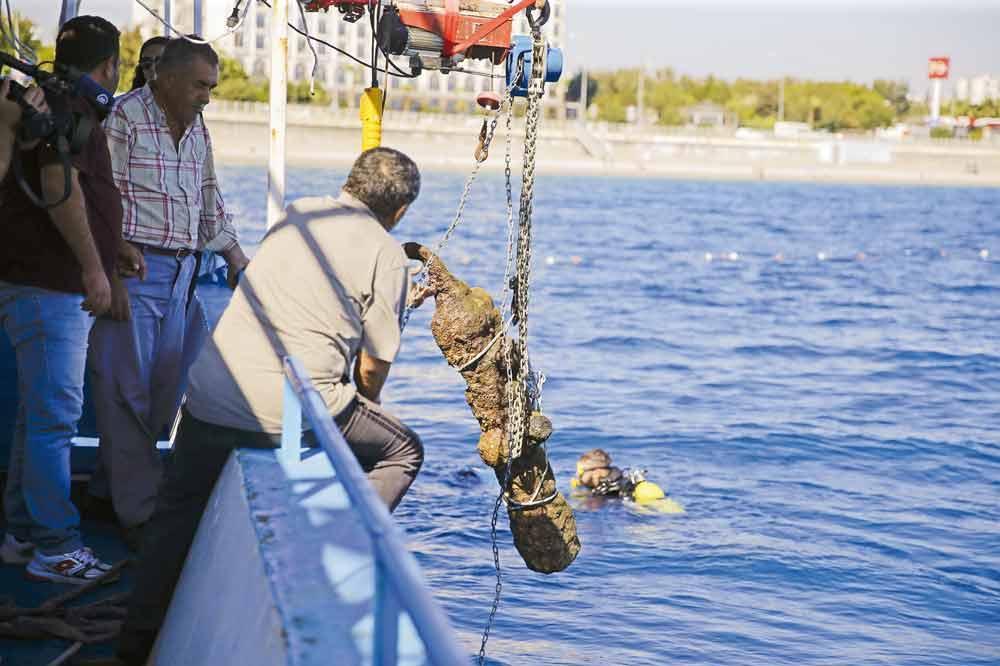Ottoman cannonballs removed from water
ANTALYA

Special underwater work has recently been carried out by archaeologists to remove Ottoman cannonballs from the sea in the world famous Konyaaltı beach in the southern province of Antalya.
With the permission of the Culture and Tourism Ministry, the Selçuk University Underwater Archaeology Department and Underwater Research and Application Center have worked to remove the cannonballs in various spots in the sea.
Eight cannonballs weighing between 400 kilograms and 1,000 tons were attached to lifting balloons and removed from the sea. The cannonballs were then transferred to the Antalya Museum.
Antalya Museum Director Mustafa Demirel said they had detected the Ottoman-era galleys and cannonballs and anchors of warships last year on the coastline from Antalya to Mersin in the Mediterranean.
“The cannonballs, which are close to the coast, had been seen by tourists who have informed the museum about them. The surface survey was finished last year. The cannonballs that had been found by tourists on these coasts were the ones that had been detected previously. We have removed them to prevent any smuggling and damage,” said Demirel.
Selçuk University’s Underwater Research and Application Center Director Hakan Öniz said the sea posed a risk for the cannonballs and they had acted with the intention of protecting the cultural assets.
Öniz said the underwater findings belonged to at least three shipwrecks.
“For the past month, we have been working on removing the cannonballs that probably belonged to Ottoman warships, which sank in a storm nearly 300 years ago. The remains of the cannonballs have been known for 20-25 years and are in the records of the Antalya Museum. These cannonballs have come to light in the last year or two. They are different weights and are pretty heavy,” he said.
Öniz, who is also the head of Selçuk University Underwater Archaeology Department, said it was not difficult for them to remove a heavy object from the sea because they had applied some techniques.
The iron balls, which are covered with sand and pebbles from oxidation in the sea, were removed by lifting balloons filled with air.
“Air brings them to the surface of the sea. We carry them to the ship on the surface of the sea. Afterwards, they are taken by the ship’s cranes. They are placed one by one in special pools in the Antalya Museum by experts. We currently have a team of 10 people, who are underwater archaeology postgraduate students. This department specializes in underwater archaeology and we work on archaeological artifacts in Mersin and Antalya. As part of the UNESCO program, we also host students from various countries in the summer months,” Öniz said.
He said they had removed the first bronze cannonball from the same region four years ago. Öniz also said the cannonballs would be cleaned and repaired by the Antalya Museum.
















